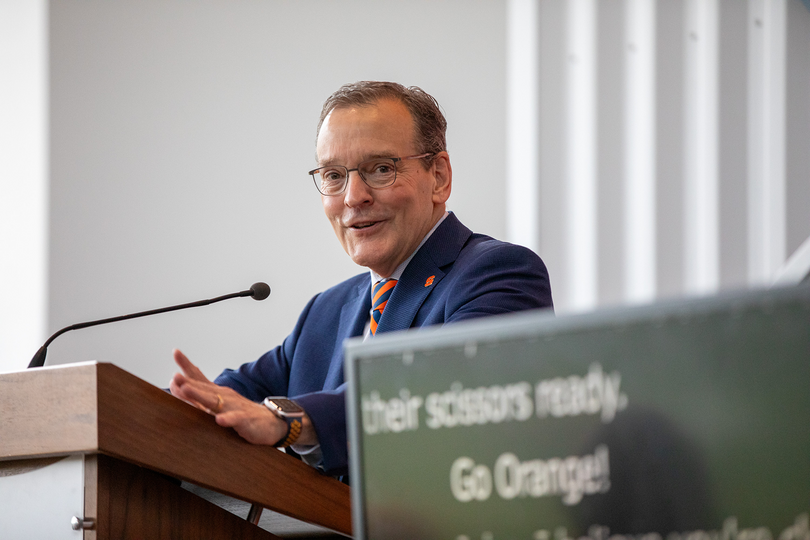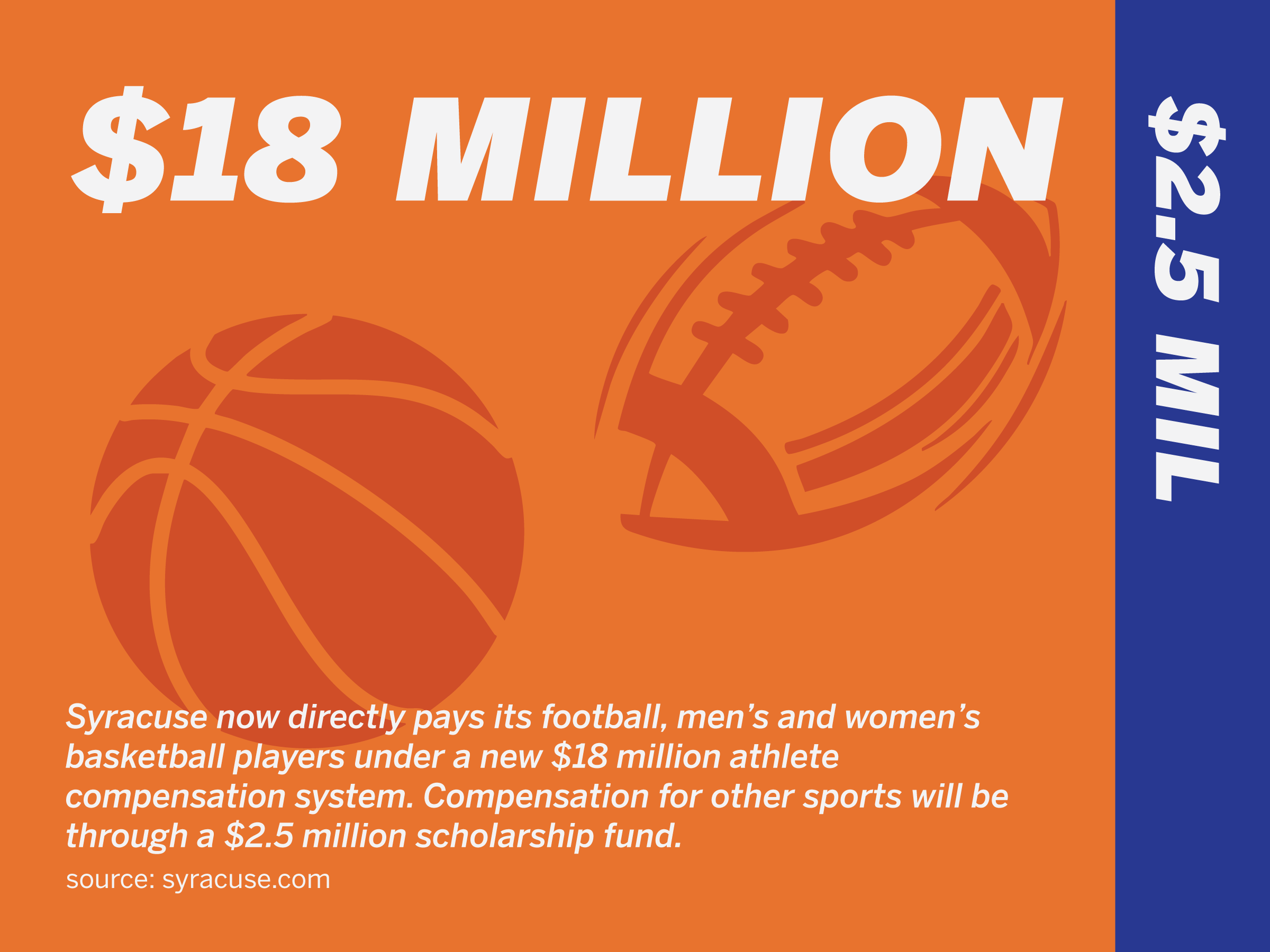Explaining Syracuse’s new direct athlete compensation system

SU now pays its athletes in its “most visible” sports as part of a new NCAA system, allowing schools to build up to $20.5 million in funding. Leonardo Eriman | Photo Editor
Get the latest Syracuse news delivered right to your inbox. Subscribe to our sports newsletter here.
Starting this summer, Syracuse University became one of many directly paying some of its athletes, marking a new era of player compensation in collegiate athletics.
The new payment system is the result of a lengthy legal battle between the NCAA and its athletes, which ended on June 6 with a settlement that also ordered the NCAA to pay almost $2.8 billion in damages over the next 10 years to college athletes who competed from 2016 to the day of the settlement.
Syracuse athletic director John Wildhack said in July that the university started directly paying athletes in its “most visible” sports, namely football and men’s and women’s basketball. That’s in addition to lacrosse, where athletes are being compensated through a new revenue-sharing model.
Three of the programs that Wildhack considers to be “most visible” made the postseason last year. Football won 10 games in its first year under Fran Brown and claimed its first bowl game win since 2018. Women’s lacrosse made the NCAA Tournament, and men’s lacrosse won its first ACC Tournament since 2016, reaching the Final Four in the NCAA Tournament.
“What are our most visible programs?” Wildhack said in an interview with syracuse.com. “It’s football, both basketballs and both lacrosses. Football, you have to be good at for obvious reasons. Basketball is real important. Women’s basketball is a growth sport. Lacrosse, you have the opportunity to win championships here.”
Under the new system, Syracuse will be able to pay its athletes with a salary cap of up to $18 million. The initial cap allows schools to pay athletes up to $20.5 million, but each school can choose to add scholarships as part of its cap. SU has allocated those to its men’s lacrosse, women’s lacrosse and field hockey teams, Wildhack said.

Sophia Burke | Digital Design Director
While it’s clear that the payment system will change college sports, there are still plenty of unknowns. Similar to most schools, Syracuse isn’t revealing how the salary cap money will be distributed among sports.
Most schools are basing their cap distribution on how former athletes will be paid from the settlement. Under that model, 75% of Syracuse’s cap would go to football players, 15% would go to men’s basketball and 5% would go to women’s basketball, according to Sports Illustrated. The other 5% would be distributed to other athletes.
Wildhack said that some athletic programs will be provided with fewer scholarships than in previous years. He declined to say which, but noted that the overall number of scholarships provided would increase. The athletic director also confirmed that the number of scholarships SU provides to football players will remain at 85.
In the first year under the new system, Wildhack said that Syracuse will pay the maximum amount it is allowed to pay players, but he remains unsure whether it will pay the full amount over the following few years.
The university has been preparing to pay its athletes directly for the past year, Wildhack said, and assured that the athletic department will not lay off employees as part of the increased financial burden. He also said that SU would not cut entire athletic programs, calling it a “last resort.”
Despite SU’s preparation, there are still lingering concerns about how Syracuse will fare under the new system. Syracuse Chancellor Kent Syverud previously said that SU’s athletic department operated in a small deficit last year.
That deficit could be allowed to increase over the next year as the NCAA hopes to put the onus on schools to assume the responsibility of paying their own athletes, but Wildhack said the university would do “everything” it could to offset the extra $20.5 million.
With schools expected to be the main entity paying athletes, the new system will allow endorsement deals. The hope is that it will limit booster-fueled collectives, which previously paid athletes the majority of the money they earned.
SU’s three collectives, Orange United, Athletes Who Care and SU Football name, image, and Likeness will likely have to reimagine their approach to any agreements with Syracuse athletes under the new system. Wildhack said that he wants the collectives to “still be an element going forward,” but acknowledged they will have to be restructured to achieve that.
Financial agreements with players over $600 will be submitted to a clearinghouse operated by Deloitte. The financial firm will review the deals to ensure they meet the new NCAA rules and prevent schools from exceeding their salary cap.
Despite the new financial burden on Syracuse’s athletic department, Wildhack said he is confident that the Orange can compete against their peers under the new system and that they will benefit the city of Syracuse overall.
“We’re not competing against any major league franchise,” Wildhack said. “You see the growth that is coming, that is taking place with Micron coming. I’m optimistic.”






